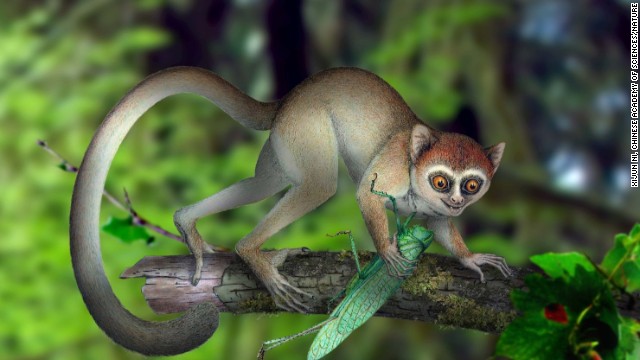An artist's rendering shows what Archicebus achilles, which lived 55 million years ago, may have looked like in its natural habitat.
STORY HIGHLIGHTS
- Scientists have discovered ancient primate Archicebus achilles
- Its name highlights its unusually modern foot
- The skeleton has a mixture of features of anthropoids and tarsiers
Achilles' heel was his weak spot in the Greek myth, but the heel of a newly discovered primate provides a strong connection between humans and their possible ancestors.
Scientists have discovered the oldest primate skeleton to date, from a creature that resembles humans' evolutionary line -- the anthropoids -- and a different primate lineage called the tarsiers. They have named this specimen Archicebus achilles, making reference to its heel bone, which resembles those of modern monkeys.
Anthropoids include humans, apes and monkeys. Tarsiers are nocturnal primates that live only in Southeast Asia today. The study is published in the journal Nature.
"For the first time, it really shines a light on an important phase of primate and human evolution that we just had very little information about before," said K. Christopher Beard, paleontologist at the Carnegie Museum of Natural History and senior author of the study.

No comments:
Post a Comment